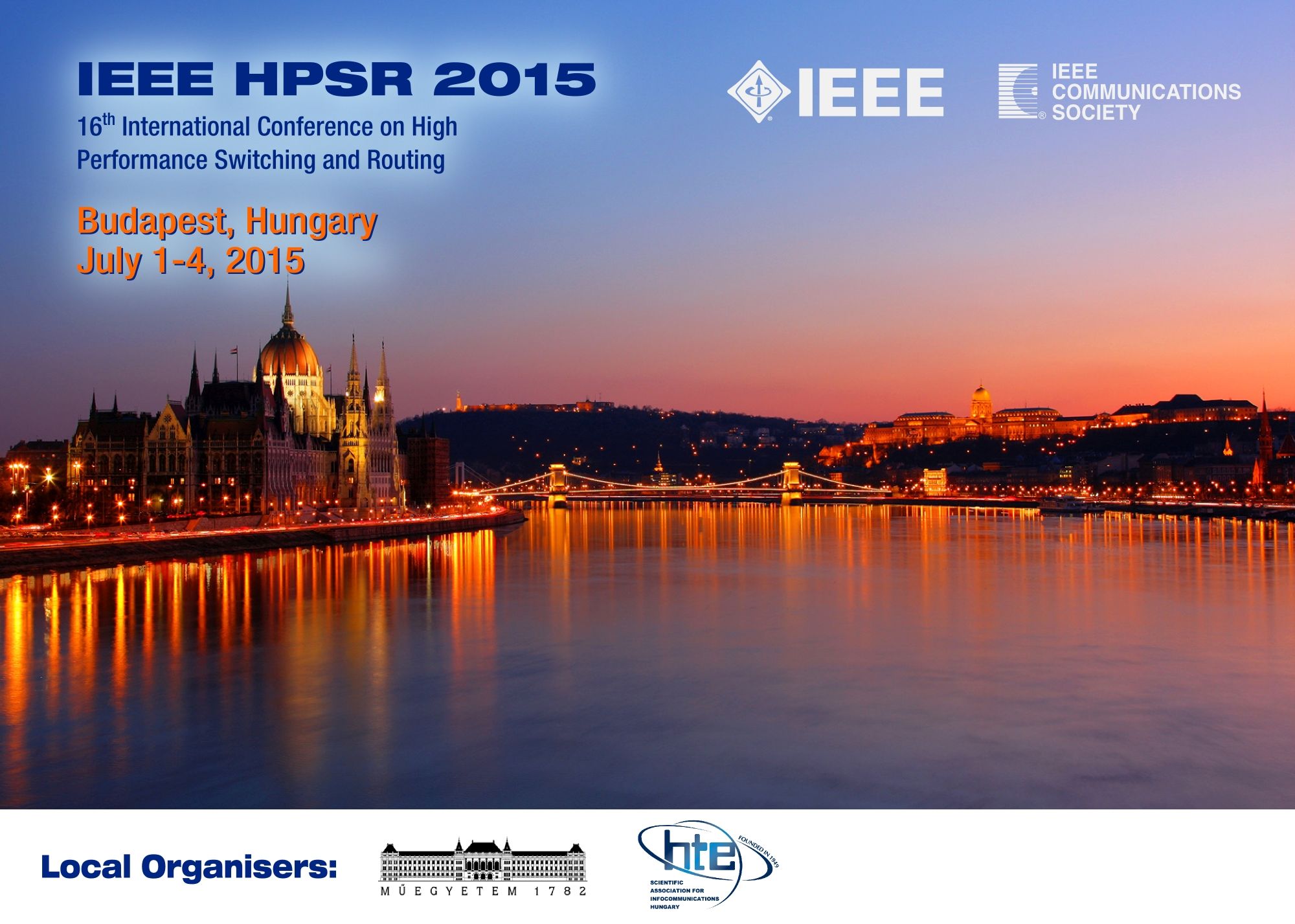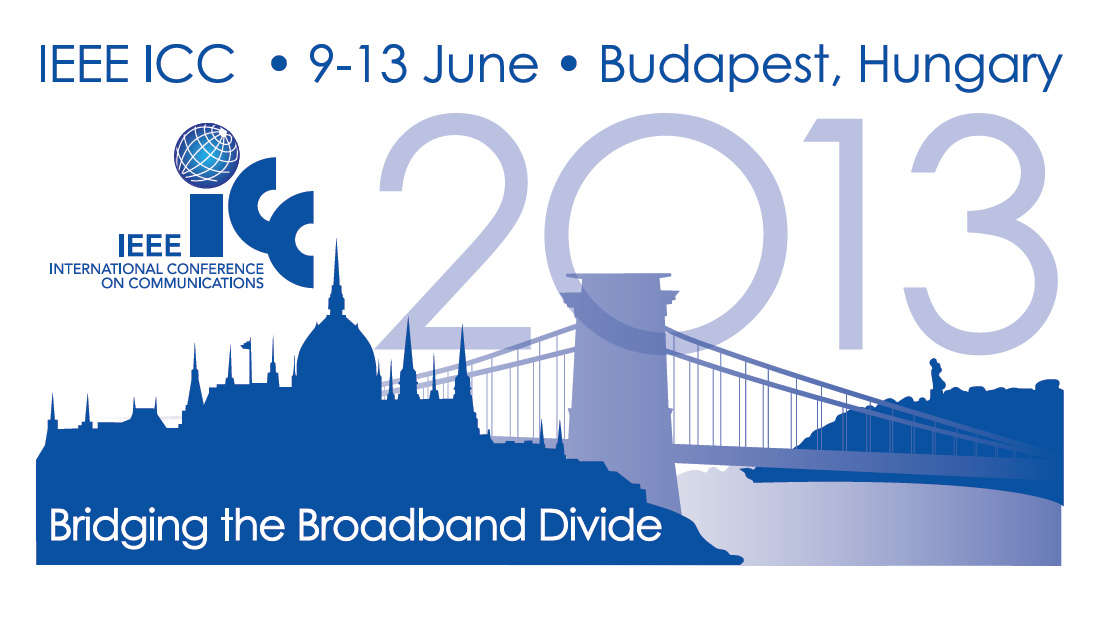2024. 1st Issue
Volume XVI, Number 1
MESSAGE FROM THE EDITOR-IN-CHIEF
Pal Varga
From PocketQube to Glucose Monitoring – in ’24 
Let's see what the first issue of ICJ in 2024 has brought. The first paper is by Iqbal Jebril et. al., in which they address the pressing challenge of securing IoT networks against Distributed Denial-of-Service (DDoS) attacks. The authors introduce a robust detection model that integrates three advanced deep learning ap proaches – CNN, BiLSTM, and transfer learning techniques – en hanced further with regularization to optimize performance. Tthis model not only showcases a high detection accuracy of 99.9%, outperforming previous models, but also demonstrates superior ca pability in distinguishing between legitimate and malicious traffic across various DDoS attack classes.
Download
PAPERS FROM OPEN CALL
Iqbal Jebril, M. Premkumar, Ghaida Muttashar Abdulsahib, S. R. Ashokkumar, S. Dhanasekaran, Oshamah Ibrahim Khalaf, and Sameer Algburi
Deep Learning based DDoS Attack Detection in Internet of Things: An Optimized CNN-BiLSTM Architecture with Transfer Learning and Regularization Techniques 
In recent days, with the rapid advancement of technology in informatics systems, the Internet of Things (IoT) becomes crucial in many aspects of daily life. IoT applications have gained popularity due to the availability of various IoT enabler gadgets, such as smartwatches, smartphones, and so on. However, the vulnerability of IoT devices has led to security challenges, including Distributed Denial-of-Service (DDoS) attacks. These limitations result from the dynamic communication between IoT devices due to their limited data storage and processing resources. The primary research challenge is to create a model that can recognize legitimate traffic while effectively protecting the network against various classes of DDoS attacks. This article proposes a CNN-BiLSTM DDoS detection model by combining three deep-learning algorithms. The models are evaluated using the CICIDS2017 dataset against commonly used performance criteria which the models perform well, achieving an accuracy of around 99.76%, except for the CNN model, which achieves an accuracy of 98.82%. The proposed model performs best, achieving an accuracy of 99.9%.
Reference
DOI: 10.36244/ICJ.2024.1.1
Download 
Balázs Solymos, and László Bacsárdi
Secure post-processing for non-ideal photon arrival time based quantum random number generator 
Utilizing the inherently unpredictable nature of quantum mechanics, quantum random number generators (QRNGs) can provide randomness for applications where quality entropy (like in the case of cryptography) is essential. We present a post-processing scheme utilizing min-entropy estimation and hashing for optical QRNGs based on measuring individual photon arrival times. Our method allows for the handling of possible errors due to non-ideal components or even a potential attacker, given some basic assumptions to reliably produce a safe, good quality, uniformly distributed bitstream as output. We validate our results with an intentionally non-ideal measurement setup to show robustness, while also statistically testing our final output with four popular statistical test suites.
Reference
DOI: 10.36244/ICJ.2024.1.2
Download 
Jyoti P. Patra, Bibhuti Bhusan Pradhan, and M. Rajendra Prasad
An Ordered QR Decomposition based Signal Detection Technique for Uplink Massive MIMO System 
Signal detection turns out to be a critical challenge in massive MIMO (m-MIMO) system due to the deployment of large number of antennas at the base station. Although, the mini mum mean square error (MMSE) is one of the popular signal detection method, but, it requires matrix inversion with cubic complexity. In order to reduce computational complexity, sev eral suboptimal signal detection methods were proposed such as Gauss-Seidel, successive over relaxation, Jacobi, Richardson methods. Although, these methods provide low complexity but their performance are limited to MMSE method. In this paper, we have proposed two signal detection techniques namely QR decompositions (QRD) and ordered QRD (OQRD). Finally, the performances of proposed signal detection methods are com pared with various conventional methods in terms of symbol er ror rate (SER) and computational complexity. The simulation re sults validate that the proposed methods outperform the MMSE method with substantially lower computational complexity.
Reference
DOI: 10.36244/ICJ.2024.1.3
Download 
Yasir Ahmed Idris Humad, and Levente Dudás
Resonant Radar Reflector On VHF / UHF Band Based on BPSK Modulation at LEO Orbit by MRC-100 Satellite
This paper presents a novel method for identify ing and tracking PocketQube satellites: the MRC-100 satellite is a model, and this method is based on a resonant radar reflec tor. The resonant reflector’s basic concept is that the resonant reflector uses a VHF/UHF communication subsystem antenna; there is no radiated RF signal, which means the power con sumption is only some Milliampere (mA). The continuous wave (CW) illuminator RF source is on the ground, and the onboard antenna receives the CW RF signal from the Earth. The micro controller (uC) periodically switches PIN diode forming BPSK modulated signal reflection so that another Earth station can receive the backscattered Binary Phase Shift Keying (BPSK) modulated signal. Also, it can detect the satellite if the ground station receiver can use a matched filter like a correlation re ceiver. If the ground station receiver knows the BPSK code of the satellite, it can detect it. If not, there is no way to detect the satellite. This method is similar to Radio Frequency Identifica tion (RFID) applications, but the reader is the ground station, and the tag is the satellite.
Reference
DOI: 10.36244/ICJ.2024.1.4
Download 
Shaimaa Alwaisi and Géza Németh
Advancements in Expressive Speech Synthesis: a Review 
In recent years, we have witnessed a fast and wide spread acceptance of speech synthesis technology in, leading to the transition toward a society characterized by a strong desire to incorporate these applications in their daily lives. We provide a comprehensive survey on the recent advancements in the field of expressive Text-To- Speech systems. Among different methods to represent expressivity, this paper focuses the development of ex pressive TTS systems, emphasizing the methodologies employed to enhance the quality and expressiveness of synthetic speech, such as style transfer and improving speaker variability. After that, we point out some of the subjective and objective metrics that are used to evaluate the quality of synthesized speech. Fi nally, we point out the realm of child speech synthesis, a domain that has been neglected for some time. This underscores that the f ield of research in children's speech synthesis is still wide open for exploration and development. Overall, this paper presents a comprehensive overview of historical and contemporary trends and future directions in speech synthesis research.
Reference
DOI: 10.36244/ICJ.2024.1.5
Download 
Frigyes Viktor Arthur and Tamás Gábor Csapó
Speech synthesis from intracranial stereotactic Electroencephalographyusinganeuralvocoder 
Speech is one of the most important human biosig nals. However, only some speech production characteristics are fully understood, which are required for a successful speech based Brain-Computer Interface (BCI). A proper brain-to speech system that can generate the speech of full sentences intelligibly and naturally poses a great challenge. In our study, we used the SingleWordProduction-Dutch-iBIDS dataset, in which speech and intracranial stereotactic electroencephalography (sEEG) signals of the brain were recorded simultaneously during a single word production task. We apply deep neural networks (FC-DNN, 2D-CNN, and 3D-CNN) on the ten speakers’ data for sEEG-to-Mel spectrogram prediction. Next, we synthesize speech using the WaveGlow neural vocoder. Our objective and subjective evaluations have shown that the DNN based approaches with neural vocoder outperform the baseline linear regression model using Griffin-Lim. The synthesized samples resemble the original speech but are still not intelligible, and the results are clearly speaker dependent. In the long term, speech-based BCI applications might be useful for the speaking impaired or those having neurological disorders.
Reference
DOI: 10.36244/ICJ.2024.1.6
Download 
Taha A. Elwi, Hayder H. Al-Khaylani, Wasan S. Rasheed, Sana A. Al-Salim, Mohammed H. Khalil, Lubna Abbas Ali, Omar Almukhtar Tawfeeq, Saba T. Al-Hadeethi, Dhulfiqar Ali1, Zainab S. Muqdad, Serkan Özbay, and Marwah. M. Ismael
On the Performance of Metamaterial based Printed Circuit Antenna for Blood Glucose Level Sensing Applications: A Case Study 
Due to the urgent need to develop technologies for continuous glucose monitoring in diabetes individuals, poten tial research has been applied by invoking the microwave tech niques. Therefore, this work presents a novel technique based on a single port microwave circuit, antenna structure, based on Metamaterial (MTM) transmission line defected patch for sensing the blood glucose level in noninvasive process. For that, the proposed antenna is invoked to measure the blood glu cose through the field leakages penetrated to the human blood through the skin. The proposed sensor is constructed from a closed loop connected to an interdigital capacitor to magnify the electric field fringing at the patch center. The proposed an tenna sensor is found to operate excellently at the first mode, 0.6GHz, with S11 impedance matching less than -10dB. The proposed sensor performance is tested experimentally with 15 cases, different patients, through measuring the change in the S11 spectra after direct touching to the sensor a finger print of a patient. The proposed sensor is found to be effectively very efficient detector for blood glucose variation with a low manu facturing cost when printed on an FR-4 substrate. The experi mental measurements are analyzed mathematically to obtain the calibration equation of the sensor from the curve fitting. Finally, the theoretical and the experimental results are found to be agreed very well with a percentage of error less than 10%.
Reference
DOI: 10.36244/ICJ.2024.1.7
Download 
Attila Zoltán Jenei, Dávid Sztahó, and István Valálik
Enhancing Parkinson's Disease Recognition through Multimodal Analysis of Archimedean Spiral Drawings 
Parkinson's disease is one of the most common neurodegenerative diseases, which is incurable according to recent clinical knowledge. Evaluating motor symptoms across diverse modalities such as speech, handwriting, and movement composes a conventional diagnostic approach. However, concurrently utilizing multimodal datasets encompassing drawing and acceleration data remains an underexplored f ield. Our investigation involved examining drawing and movement data of 45 Parkinson's disease (PD) patients and 47 healthy individuals (HC). The PD group presented mild symptoms in the right hand. We transformed drawing data into spiral images and used visual representations of motion data, employing pre-trained models for feature extraction and classifiers. While motion representations exhibited superior performance compared to drawing images, a comprehensive evaluation with the Mann-Whitney U test at a significance level of 0.05 revealed no statistically significant difference between the efficacy of movement and drawing data in all classification scenarios. Significant improvements were made by combining the drawing data predictions with the motion data predictions. The key finding of the research is that the recognition of the disease can be improved by connecting (post-model) the two modalities. Furthermore, it can be concluded that with the present approach, neither the drawing nor the movement data produced lower results on average.
Reference
DOI: 10.36244/ICJ.2024.1.8
Download 
Past international events
IEEE NOMS 2022 - IEEE/IFIP Network Operations and Management Symposium
April 25-29, Budapest
https://noms2022.ieee-noms.org/

SSW11 2021 - Speech Synthesis Workshop
August 26-28, Budapest
https://ssw11.hte.hu/

IEEE NOMS 2020 - IEEE/IFIP Network Operations and Management Symposium
April 20-24, Budapest
https://noms2020.ieee-noms.org/

SDL 2017 - 18th International System Design Languages Forum Model-driven dependability engineering
October 9-11, Budapest
http://www.sdl2017.hte.hu/

ONDM 2017 - 21st International Conference on Optical Network Design and Modeling
May 15-17, Budapest
http://www.ondm2017.hte.hu

SPECOM 2016 - 18th International Conference on Speech and Computer
August 23-27, Budapest
http://www.specom2016.hte.hu/

EUSIPCO 2016 - 24th European Signal Processing Conference
29 August - 2 September, Budapest
http://www.eusipco2016.org

IEEE HPSR 2015 - 2015 IEEE 16th International Conference on High Performance Switching and Routing
July 1-4, Budapest
http://www.ieee-hpsr.org

21th European Wireless Conference
May 20-22, 2015 Budapest
http://ew2015.european-wireless.org

IEEE PerCom - IEEE International Conference on Pervasive Computing and Communications
March 24-28, 2014, Budapest, Hungary
http://www.percom.org/2014

IEEE ICC2013 - IEEE International Conference on Communications
June 9-13, 2013, Budapest, Hungary
http://www.ieee-icc.org/2013

